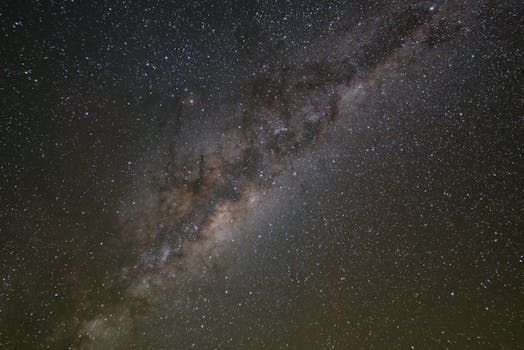
“
Beyond the Milky Way: Imagining New Worlds and Possibilities
The Milky Way galaxy, our home in the universe, has been a subject of human fascination for centuries. As we continue to explore and understand our own galaxy, we are also drawn to the possibility of other galaxies and worlds beyond our own. In this article, we will delve into the possibilities of new worlds and the potential for human exploration and discovery.
Introduction to the Cosmos

The universe is vast and complex, with billions of galaxies, each containing billions of stars and planets. The Milky Way is just one of these galaxies, a spiral galaxy that is estimated to contain between 200 and 400 billion stars. As we look beyond our own galaxy, we are faced with the possibility of other galaxies and worlds that may be similar or vastly different from our own.
Imagining New Worlds

As we explore the possibility of new worlds, we are limited only by our imagination. We can envision planets with conditions similar to those of Earth, with liquid water and a stable atmosphere, or we can imagine worlds that are vastly different, with extreme temperatures and unusual compositions. The discovery of exoplanets, planets that orbit stars other than the Sun, has opened up new possibilities for the search for life beyond our solar system.
The Search for Life Beyond Earth

The search for life beyond Earth is an ongoing and fascinating field of research. Scientists use a variety of methods to search for signs of life, including the detection of biosignatures, such as the presence of oxygen or methane in a planet’s atmosphere. The discovery of life beyond Earth would be a major breakthrough, with significant implications for our understanding of the universe and our place within it. This topic is closely related to the imagining new worlds and the potential for human exploration.
Challenges and Opportunities

As we explore the possibility of new worlds and the search for life beyond Earth, we are faced with significant challenges and opportunities. The distances between stars and galaxies are vast, and the technology to travel to other planets and galaxies is still in its infancy. However, the potential rewards of exploration and discovery are significant, and could lead to major breakthroughs in our understanding of the universe and our place within it.
Conclusion and Takeaways

In conclusion, the possibility of new worlds and the search for life beyond Earth is a fascinating and complex topic. As we continue to explore and understand our own galaxy, we are also drawn to the possibility of other galaxies and worlds beyond our own. The search for life beyond Earth is an ongoing and fascinating field of research, with significant implications for our understanding of the universe and our place within it. The main takeaways from this article are:
- The universe is vast and complex, with billions of galaxies, each containing billions of stars and planets.
- The search for life beyond Earth is an ongoing and fascinating field of research, with significant implications for our understanding of the universe and our place within it.
- The discovery of exoplanets has opened up new possibilities for the search for life beyond our solar system.
- The distances between stars and galaxies are vast, and the technology to travel to other planets and galaxies is still in its infancy.
- The potential rewards of exploration and discovery are significant, and could lead to major breakthroughs in our understanding of the universe and our place within it.
See more:
https://www.nasa.gov/
https://www.space.com/
https://www.esa.int/







